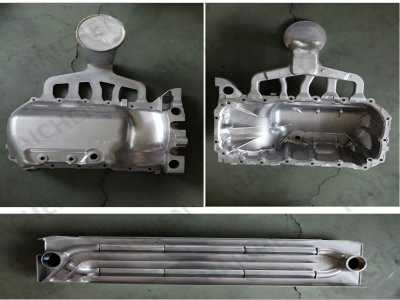Die Casting Overflow is a small chamber in molds that collects excess molten metal to ensure consistent casting quality.

Die casting is a precision manufacturing process used to produce complex metal parts by injecting molten metal into a mold cavity under high pressure. One common feature in die casting molds is the overflow, which plays a crucial role in ensuring the quality and consistency of the final product. This article will explore what die casting overflow is and its significance in the die casting process.
Definition of Die Casting Overflow
The die casting overflow, also known as an overflow cavity, connects to the main mold cavity as a small chamber. Its primary function is to collect excess molten metal during the injection process. This excess metal is often the result of fluctuations in the injection pressure or volume, and the overflow ensures that this excess does not interfere with the main casting.
Function of Die Casting Overflow
1 Ensuring Consistent Fill
The overflow helps ensure that the main mold cavity is filled consistently and completely. By providing a place for excess metal to go, it prevents the formation of voids or incomplete fillings in the final part.
2 Reducing Defects
Overflow cavities can help reduce defects such as porosity and inclusions. By capturing excess metal, they prevent these impurities from becoming trapped in the final casting, leading to higher – quality parts.
3 Enhancing Mold Life
By reducing the pressure on the mold walls, the overflow can help extend the life of the mold. This is particularly important in high – volume production runs where mold wear can be a significant issue.

Design Considerations
1 Size and Shape
The size and shape of the overflow cavity are critical for its effectiveness. It must be large enough to collect excess metal but not so large that it wastes material or affects the overall mold design.
2 Placement
The placement of the overflow cavity is also important. The mold designer should position the overflow to capture excess metal without disrupting the flow into the main cavity. Typically, they place it at the end of the flow path.
3 Material and Cooling
Designers should use materials for the overflow cavity and its cooling system that can withstand the high temperatures and pressures of the die casting process. Effective cooling allows the excess metal to solidify quickly, enabling easy removal.
HAICHEN: Your Partner in Die Casting Excellence
At HAICHEN, we specialize in manufacturing high – quality die casting machines designed for precision and efficiency. Our machines are equipped with advanced features that ensure consistent performance and high – quality production. Whether you are starting a new project or upgrading your existing equipment, HAICHEN has the solutions to meet your needs.

Understanding the role of die casting overflow is essential for achieving high – quality and efficient production. By providing a place for excess metal to go, the overflow helps ensure consistent fill, reduces defects, and enhances mold life.



